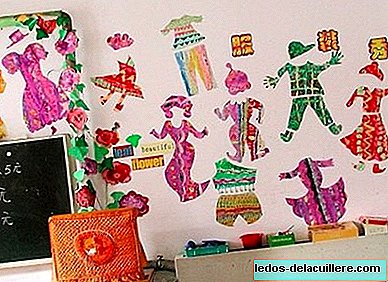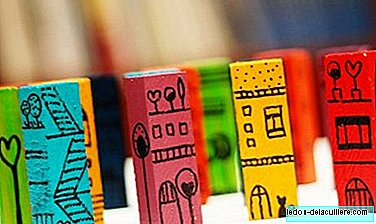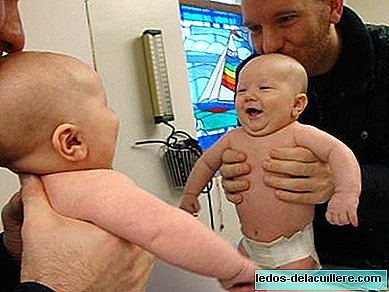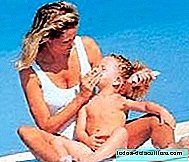In Mexico we are living a very difficult time. Almost two weeks after an earthquake of 8.2, our country shuddered again this week, just on the 32nd anniversary of that tragic earthquake of 1985. There is a lot of anguish and pain, a lot of fear. If we have children, those fears multiply.
This is why today I want to share some tips on what can you do before, during and after an earthquake when you have small children.
An earthquake does not warn
Much of the Mexican territory is seismic zone, so it is not uncommon for most of those who live here to have had a class on what to do in case of an earthquake at some time in our lives. After the earthquake of 1985, every September 19 is held in mock evacuation schools. It could be said that we are prepared.
Fortunately my family and I are far from the area where this last earthquake occurred, however the city where I live suffered a 7.2 degree just seven years ago. We know what it feels like, we know how difficult it can be. Therefore it is important to be prepared and know how to act. Why an earthquake does not warn or predict, it just arrives.
When we are parents or teachers, we must be ready to protect not only us, but also young children who are under our responsibility. How to do it? I share some actions to help prepare them, take care of them during the earthquake and support them after it has passed.
Prepare them so they know what it is
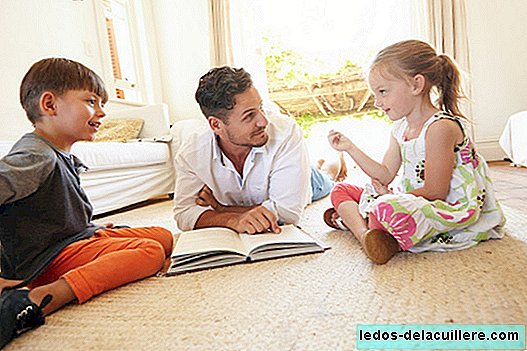
The first thing we must do is explain and talk to them about the natural disasters that exist. We must prepare them so that they are aware of the possibility of an earthquake or earthquake. While it is not possible to predict them, It is extremely important that they know how to act and what to expect in case one occurs.
We must start by educating them about earthquakes: what they are, why they occur and what we should do during one. The next thing we can do is conduct evacuation drills with them. You can try to do it from a game-like approach so they don't get scared, but it is important that they practice it from time to time so that they are ready.
It is important to have a family plan at home in which everyone participates. Indicate the safest places inside the house and draw evacuation routes and showing them to the little ones during the drill we do. If our children are of school age, we should talk with them about what to do if they are in school and reaffirm that even if we are not with them, they should remain calm.
Too we must always have an emergency backpack ready in which we have the necessary things for an evacuation: bottled water, clothes, canned food (and can opener if it is not easy to open), flashlight, radio batteries, batteries, candles, matches, a change of clothes, a blanket and a first aid kit are the basics.
During the earthquake
At the moment the earthquake occurs the main and most important thing is to keep calm. Don't panic, try not to be too scared of them, no matter how much you are. Children trust us as adults and if they see us very upset, they will be even more frightened. Be strong.
Remember the three key directions: I don't run, I don't scream, I don't push. If we are not close to a quick exit, the recommendation is to place ourselves in the safest place we have indicated during evacuation drills, away from windows and furniture or objects that may fall. For no reason use the elevator.
During the earthquake we must protect our children with our body, placing ourselves above them and covering their head, as shown in these images:
At the end of the earthquake
Once the earthquake is over, we must continue to act calmly. If we are at home it is important to review the possible damages, make sure the property is safe. If we have doubts or see that there is a lot of damage it is best not to return to it, especially for the possible replicas that could occur in the following hours.
Find a safe place if you can't go home and stay together for no reason do you separate yourself from children. Use the phones only for emergencies and check that everyone is well and safe.
How to reassure them later

If the quake felt very intensely, the children will surely be scared, so we must continue to keep calm. In addition to accompanying them, there are a series of steps that we can take to reassure them.
- Talk about what happened. Once they are in a safe place, talk with them about what happened. If you have questions or concerns, you must be there to answer and help calm down.
- Help him express his emotions. It is very likely that after an earthquake children are afraid. Explain that fear is normal and avoid phrases like "don't be afraid" or "nothing happens." It is best to help you express what you feel, remember that children need a lot of emotional support during difficult times and we should not minimize their emotions. If you need professional help, we must seek it.
- Avoid exposing them to tragic news. While we should not try to hide the magnitude of what happened, our children do not need to watch videos of collapsing buildings or know how many people died during the earthquake. Let's be realistic, yes, but let's not overexpose them to what is not necessary.
- Use distractors. Being talking only about the earthquake and everything that happened can cause anxiety or fear in the child. Try to distract him by doing some activity he likes, you can tell him a story, he can draw or maybe sing a song that encourages him. Many children learn to deal with their feelings through these activities.
To the extent possible, continue your life as normal. Keeping calm is key to helping our children to go through a situation like this. Your children need you by their side to feel safe, calm and protected.
Photos | iStock
More information | Family Plan - National Center for Disaster Prevention
In Babies and more | Earthquakes, hurricanes, tsunamis: how to talk with children about natural disasters


